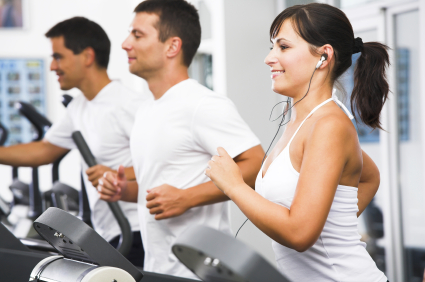How to Take Care of Your Spine/Back
Not taking care of your spine can turn out to be a real pain in the back—literally. Back pain is a common complaint, but there are simple steps you can take to improve your spine health and lessen or eliminate pain. Read through the following tips and think about how you typically move as you go through daily activities. Could you make some of these simple changes?
Sleeping
Healthy sleeping habits benefit your overall health, and the way you sleep impacts the health of your spine specifically. Avoid sleeping on your stomach as it puts unnecessary pressure on your spine and neck. If you sleep on your back, you can better maintain the healthy neutral curvature of your spine and avoid painful compression of its joints, nerves and muscles. If you sleep on your side, make sure your pillow is thicker to keep your neck and back straight. It can also be helpful to place a pillow between your knees keep your hips, pelvis and spine aligned.Stretching
Another way to lessen spine pain is to make stretching a routine part of your day. Prep for good posture by stretching out your hamstrings (the muscles in the backs of your legs) every morning. Tight hamstrings pull on the bottom of your pelvic muscles and in turn cause lower back pain. Stretching breaks throughout the day are also a good way to get your blood flowing if you’re sitting or performing repetitive actions for a long period of time.Perfect your posture
Not all chairs are created equal—make sure that the chairs you use at home and work area facilitate proper posture. Sit in a chair that provides back support, allows your knees to be at 90 degrees and your feet to be resting comfortable on the floor. If you’re looking at a screen all day, position it so that it is in your line of sight when sitting up straight with your neck in a neutral position. Avoid slouching forward or bending your neck unnaturally, and make sure to stand up, stretch and/or take a short walk every 30 minutes or so. These breaks are good for your mental health as well as your physical health!Get on your feet
Just like sleep, staying active has benefits for your whole body but is also an important component of spine health. Develop an exercise routine that combines stretching, strengthening and aerobic activity and includes abdominal and back exercises. Losing belly fat lessens stress on your spine, and strong back and abdominal muscles help support your spine and lessen the overall chance of injury. Also, wear the right shoes will also help your spine health while you’re being active. Choose a pair that is comfortable and flexible for a supportive base that will help your body remain in proper alignment.Whether you’re doing strengthening exercises or lifting something at home or at work, be sure to lift from your legs, not your back or upper body. Bend your knees so that your arms are at the same height as the item, keep your back straight as you rise using the strength of your legs to lift. If the object is too heavy, get a second person to help you.
More water, fewer toxins
Don’t forget the H2O! Staying hydrated provides tissue elasticity and fluidity in joints—keeping your spinal discs hydrated keeps them at the proper height and means your spine stays protected. Dehydrated discs shrink and leave you vulnerable to painful ruptures or bulges.In addition to giving your body enough water, make sure it’s getting enough oxygen. Did you know that quitting smoking can alleviate back pain? Your body needs certain levels of oxygen for healthy bones and muscles, but those levels decrease when you smoke. Kicking the habit increases oxygen levels, ensuring that all the different parts of your spine have enough oxygen to be healthy.
Know when to say when
Making these lifestyle changes to protect your spine and back is a great start to relieving and avoiding back pain, but keep in mind that if your back pain persists it could be time to seek medical attention. Like any medical issue, spine problems can worsen and become more serious if left untreated. Pay attention to what your body is telling you, and know when your efforts at spine health need a second opinion. What questions do you have about taking care of your spine? Let us know in the comments!



 Are you beginning a new exercise routine or getting back to the gym after a hiatus in order to keep a New Year’s resolution? Be sure to follow these safety tips for a healthy, productive and safe workout!
Are you beginning a new exercise routine or getting back to the gym after a hiatus in order to keep a New Year’s resolution? Be sure to follow these safety tips for a healthy, productive and safe workout!